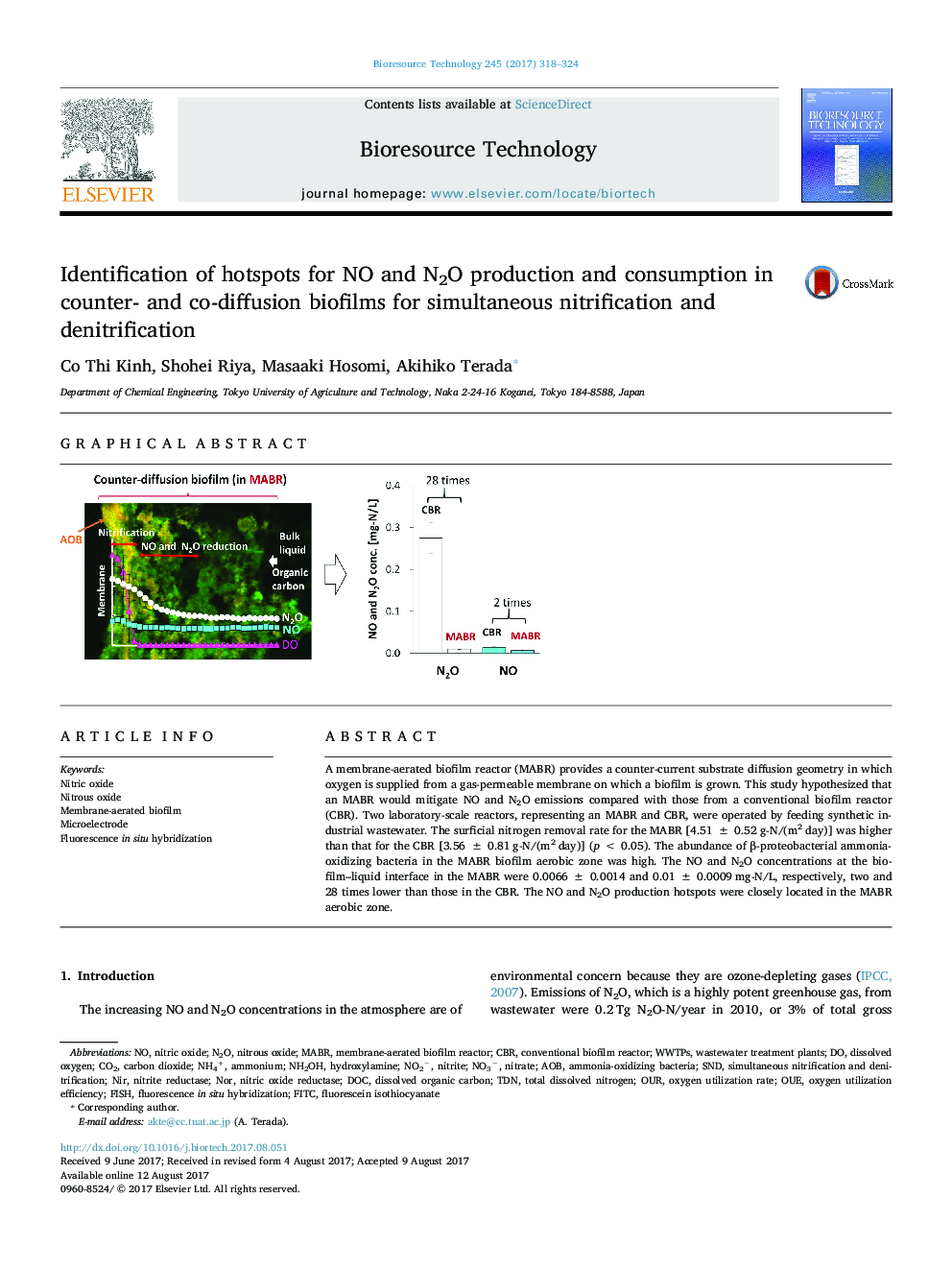| Article ID | Journal | Published Year | Pages | File Type |
|---|---|---|---|---|
| 4996771 | Bioresource Technology | 2017 | 7 Pages |
â¢Trends in NO and N2O production and consumption in an MABR and CBR were compared.â¢The MABR achieved a 21% higher nitrogen removal rate than the CBR.â¢MABR emits less NO and N2O than CBR by factors of 2 and 28, respectively.â¢The NO and N2O production hotspots are closely located in the MABR aerobic region.â¢Mechanisms of NO/N2O production/consumption in an MABR and CBR are discussed.
A membrane-aerated biofilm reactor (MABR) provides a counter-current substrate diffusion geometry in which oxygen is supplied from a gas-permeable membrane on which a biofilm is grown. This study hypothesized that an MABR would mitigate NO and N2O emissions compared with those from a conventional biofilm reactor (CBR). Two laboratory-scale reactors, representing an MABR and CBR, were operated by feeding synthetic industrial wastewater. The surficial nitrogen removal rate for the MABR [4.51 ± 0.52 g-N/(m2 day)] was higher than that for the CBR [3.56 ± 0.81 g-N/(m2 day)] (p < 0.05). The abundance of β-proteobacterial ammonia-oxidizing bacteria in the MABR biofilm aerobic zone was high. The NO and N2O concentrations at the biofilm-liquid interface in the MABR were 0.0066 ± 0.0014 and 0.01 ± 0.0009 mg-N/L, respectively, two and 28 times lower than those in the CBR. The NO and N2O production hotspots were closely located in the MABR aerobic zone.
Graphical abstractDownload high-res image (231KB)Download full-size image
